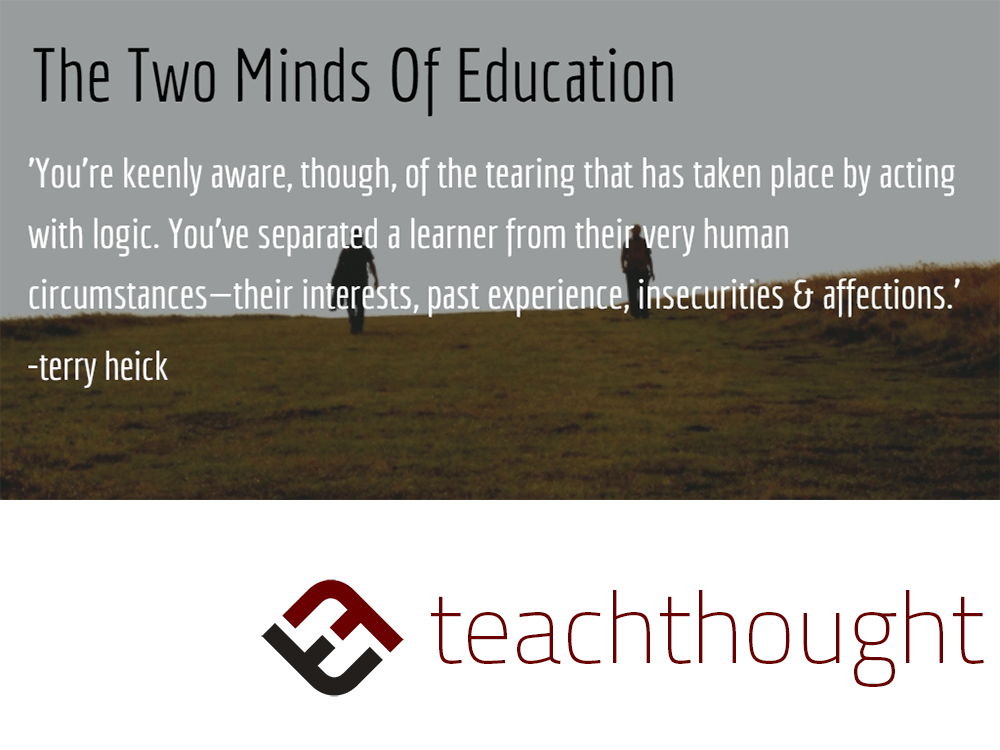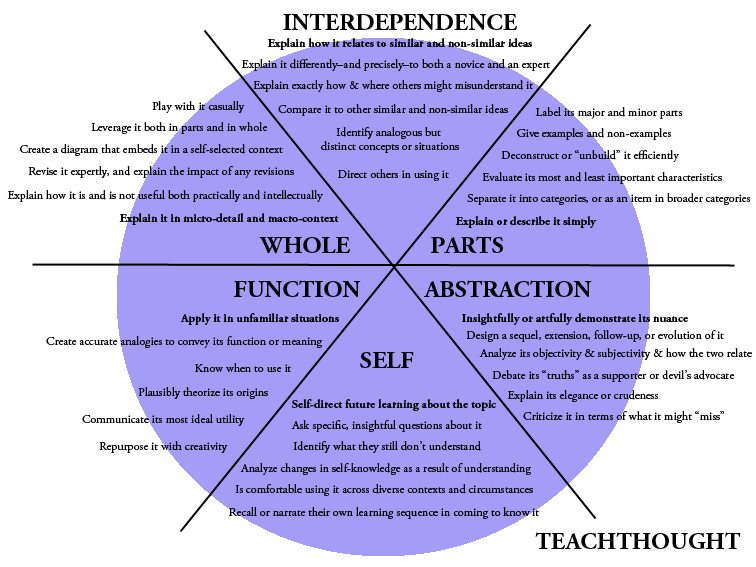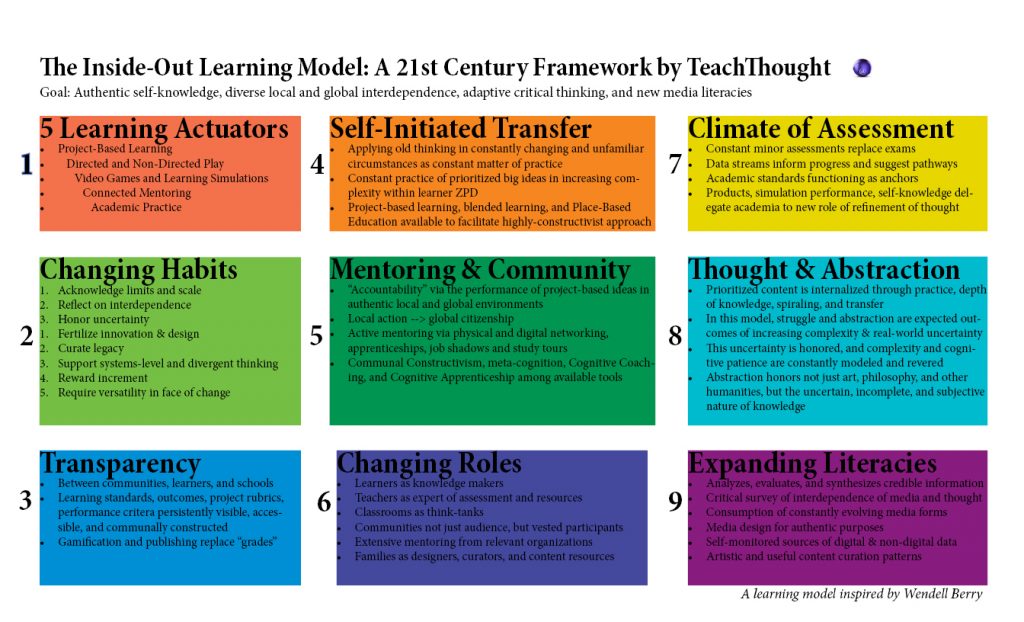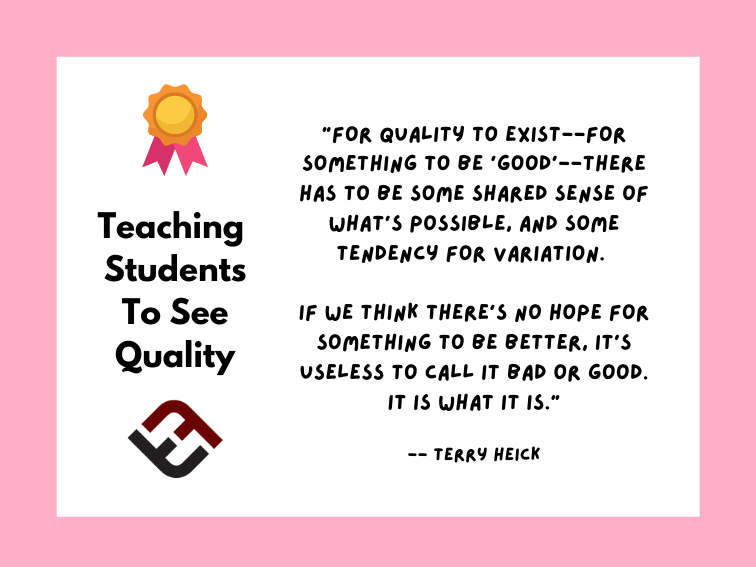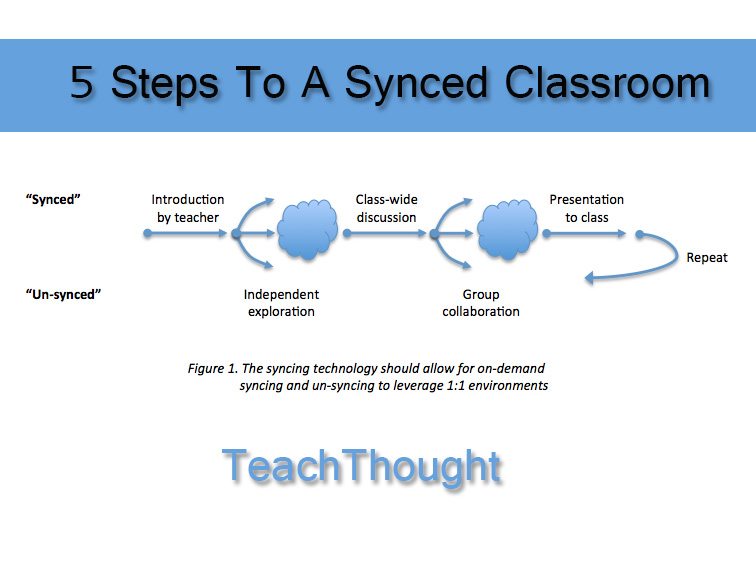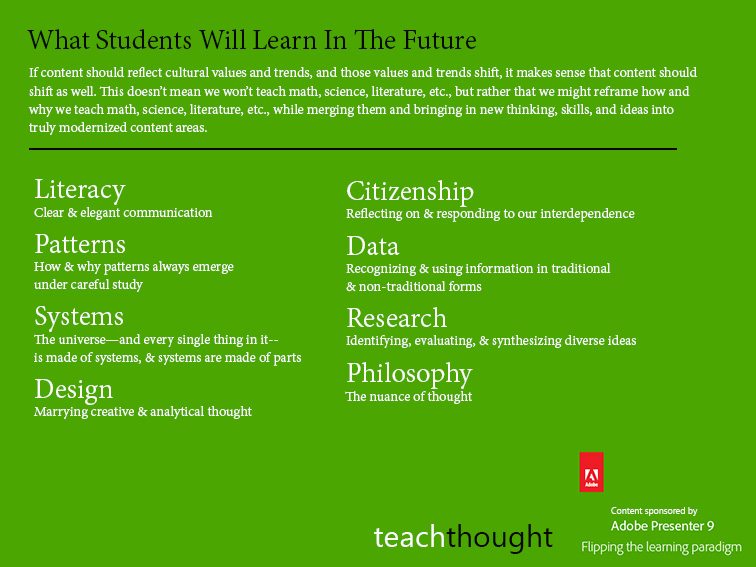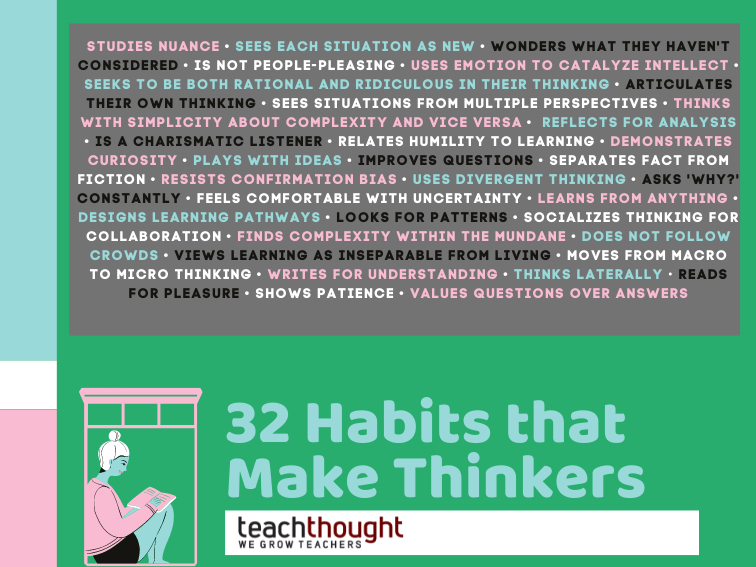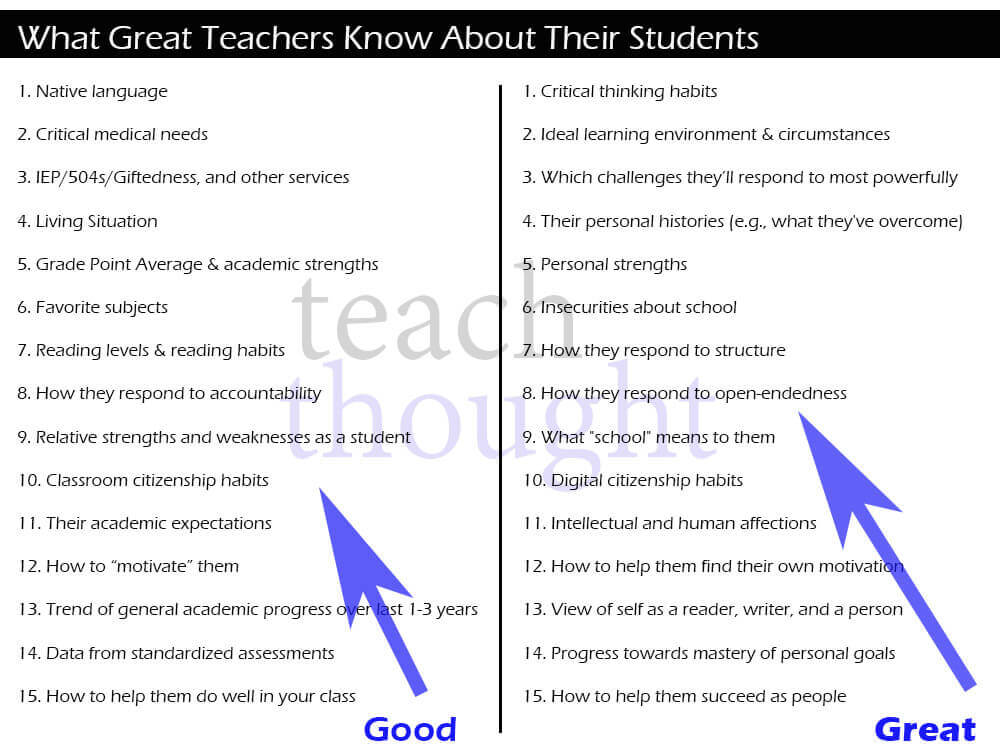Tag: Our Best
The Two Minds Of An Educator
The need to be rational collides with the enormous complexity and scale of the circumstances teachers face.
6 Domains Of Cognition: The Heick Learning Taxonomy
The Heick Learning Taxonomy can be used to guide planning, assessment, curriculum design, and self-directed learning.
The Inside-Out School: A 21st Century Learning Model
A micro-goal of the ‘Inside-Out’ School is a new kind of ‘intelligence’ where the macro-effect is healthier communities and citizenship.
Teaching Students To See Quality
So what does quality have to do with learning? Quite a bit, it turns out. And it starts out with helping students…
An Innovative Learning Model: How To Sync Your Classroom
Learning in a synced classroom requires the ability to engage the same core material and the ability to engage the material independently.
What Students Will Learn: 8 Responsive Content Areas Of…
This doesn’t mean we won’t teach math or reading in the future. However, we might reframe what we teach and how and…
32 Habits That Make Thinkers
These 32 habits that make thinkers can lead to that critical shift that moves students from mere students to learners who think…
Learning Profiles: What Great Teachers Know About Their Students
Most learning profiles are quick glances of academic data. There’s nothing wrong with this. They are useful, but they are also limited.
